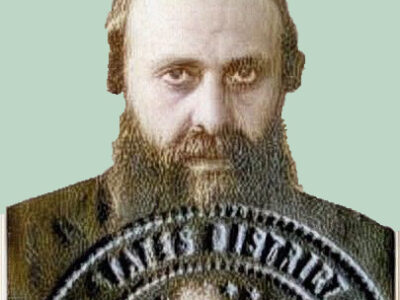 One day about ten years ago, a teenaged Russian immigrant to Israel witnessed a fatal traffic accident through her window. The tragedy occurred on a Friday afternoon. The next day the 17-year-old witness, Menuhah, showed her sister the spot on the road where it had occurred.
One day about ten years ago, a teenaged Russian immigrant to Israel witnessed a fatal traffic accident through her window. The tragedy occurred on a Friday afternoon. The next day the 17-year-old witness, Menuhah, showed her sister the spot on the road where it had occurred.
There was still blood on the road and Menuhah didn’t want to point at it with her fingers. Instead she used her foot and her foot inadvertently touched the blood. From that moment, Menuhah believed herself possessed of the spirit of the dead girl, whose name, she learned from a radio report, had been Miri.
Menuhah began experiencing stomach pains, confusion and headaches, which she related to having stepped on Miri’s blood. Soon her life took another bizarre twist: she fell in love with a soldier whom she met in the cemetery on Jerusalem’s Mount Herzl. Such a liason being forbidden among the orthodox, Menuhah’s parents attempted to segregate her.
When her troubles persisted for three months, Menuhah’s parents arranged to take her to Rabbi Daniel, a kabbalist of Moroccan background known in certain orthodox circles for conducting aliyot or ascents into the spirit world for the purpose of exorcising dybbuks or spirits.
Rabbi Daniel and his wife were quick to confirm that there was a spirit inhabiting Menuhah, that it belonged to Miri, and that the dead girl had forced Menuhah to fall in love with a soldier because she had also loved a soldier.
This contemporary account of the exorcism of a dybbuk is one of several such tales reported in the Israeli news media in recent decades, and one of many to occur throughout Jewish history. What makes this episode extremely rare is that the exorcist happened to be a woman: it was the rebbetzin who, in the end, coaxed the spirit of the dead girl to leave Menuhah’s body.
What also distinguishes this episode is the level of its documentation. Tamar Alexander, a professor of Hebrew literature from Ben-Gurion University, observed it closely and recorded the first-person stories of three participants.
Alexander’s fascinating, scholarly analysis of this episode is one of a dozen such essays in Spirit Possession in Judaism: Cases and Contexts from the Middle Ages to the Present. Edited by Matt Goldish, the 476-page book was published recently by Wayne State University Press as part of its Raphael Patai series in Jewish folklore and anthropology.
Anyone familiar with Patai’s works will see the same high level of intellectual scope and depth mirrored here.
Spirit Possession in Judaism offers a wide-ranging, encyclopedic approach that includes a discussion by Jonathan Seidel of possession and exorcism in the texts of the Cairo Geniza; a treatment by Lawrence Fine and J. H. Chajes of spirit possession in 16th-century Safed; a discussion by Goldish of Nathan of Gaza’s early prophecies; a recounting by Roni Weinstein of the mystical career of the 17th-century Italian Rabbi Moses Racuto; and an analysis by Yoram Bilu of possession illnesses in three Jewish milieus.
Joseph Dan’s masterful introduction pays tribute to the work of scholar Gershon Scholem, while the cover art pays homage to the 1937 film The Dybbuk, itself an allusion to playwright S. An-ski’s famous play The Dybbuk, which brought the dybbuk legend to popular awareness. Texts of various Judaic works involving spirit possessions are presented in ten appendices.
The authors approach the subject through many doors — religion, mysticism, literature, anthropology, psychology, history, folklore — leaving the reader to recall the Shakespearean observation: “There are more things in heaven and earth, Horatio, than are dreamt of in your philosophy.” ♦
© 2003 by Bill Gladstone






